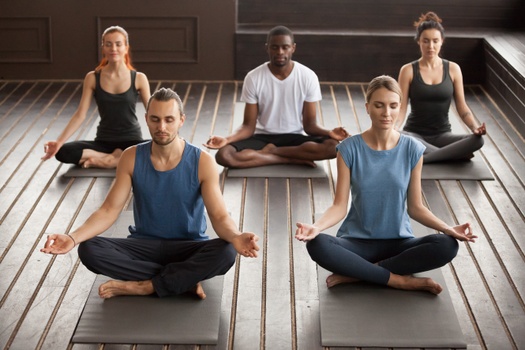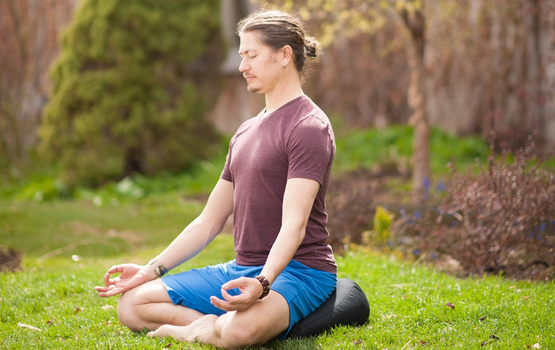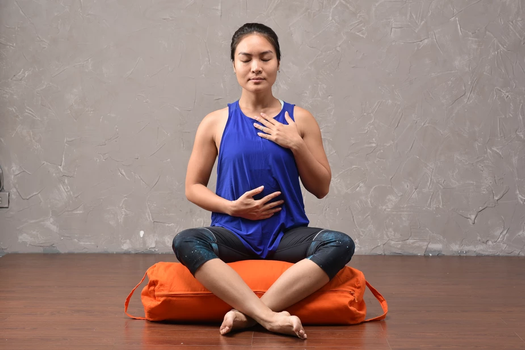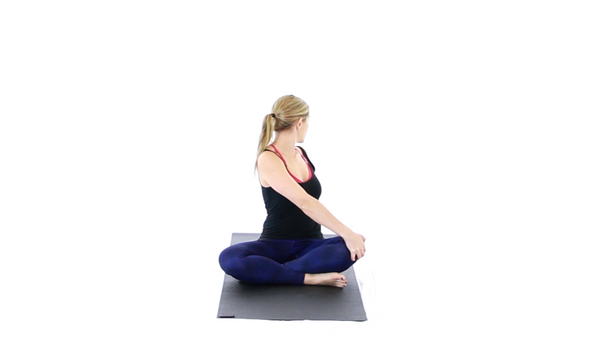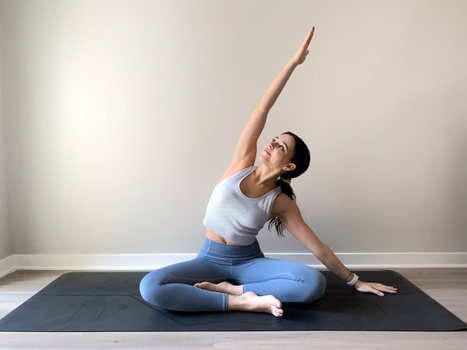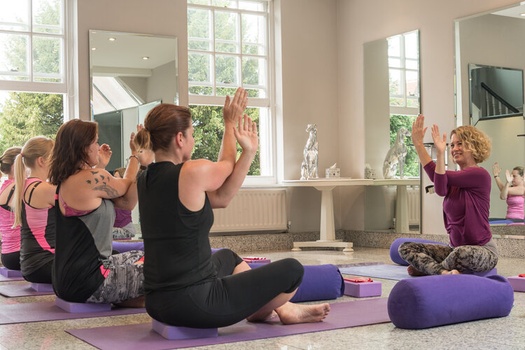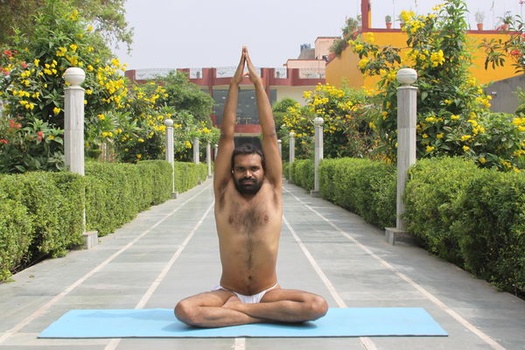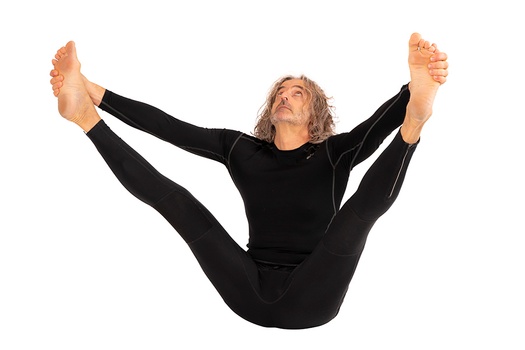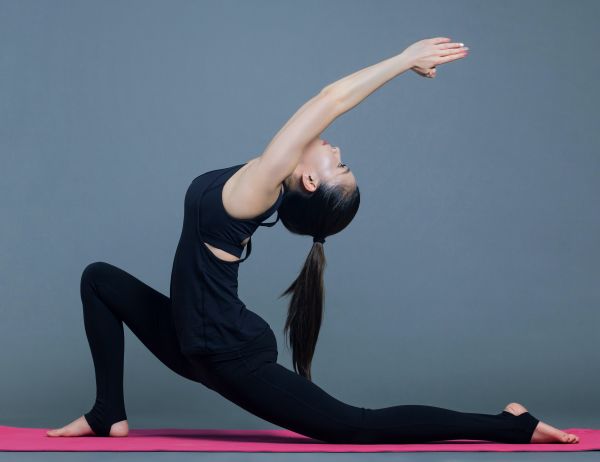Although the name of this pose is easy, it requires an adequate range of motion in the glutes, hip flexors, inner thighs, and lower back before getting started with the primary pose practice.
We have divided the main practice into four parts: warm-up, steps, alignment cues, and relax flow. Plus, you will find posture modifications and variations for all levels of yogis.
Part 1 - Preparatory Poses for Sukhasana
To prepare for Easy pose, you should thoroughly warm up your lower body, core, and spine. The following are some warm-up yoga poses that can help activate those areas:
1. Dandasana (Staff Pose) - Sit with your legs straight and extended on the yoga mat. Keep your heels tucked into the ground and all of your toes pointing toward the ceiling. Engage your legs, core, and back muscles for a stable sitting posture.
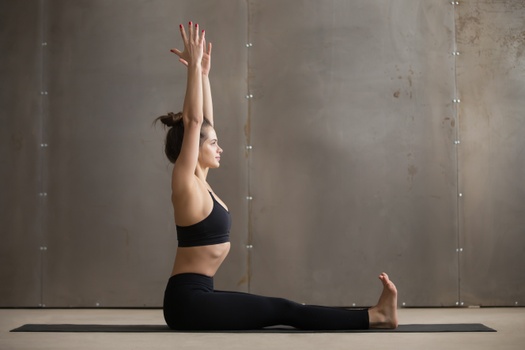
Make sure your chest is open and your shoulders are aligned in one line with your hips. Place your palms at the sides of your hips and maintain this position for 1-5 minutes. This is a great way to activate the flow of blood in your back, hamstrings, and pelvis.
2. Baddha Konasana (Bound Angle Pose) - Also known as Butterfly and Cobbler's Pose, this pose is an excellent way to stretch your glutes, inner thighs, and hip flexors. Start by sitting in Staff pose and lengthening your spine upright. Next, bend your legs, form a namaste formation with your legs, and hold both feet with your hands.
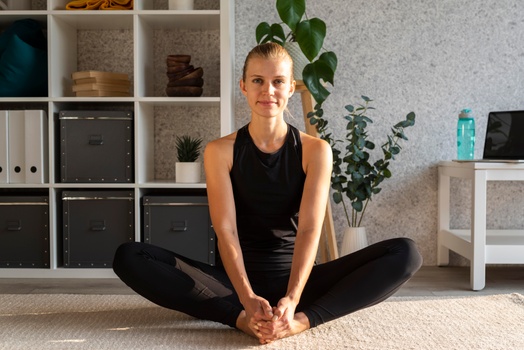
Make sure your knees are close to the ground while gazing at a neutral point in front of you. Hold this position here for a few deep breaths, or you can also flap the legs up and down for enhanced blood circulation in your legs.
3. Hindolasana (Seated Leg Cradle Dynamic Movement) - Sit in Easy pose and raise your top leg to your chest. Hold this leg with both hands, so it seems like you're holding a baby in your arms. Now, just like cradling a baby in your arms, cradle your leg from each side.
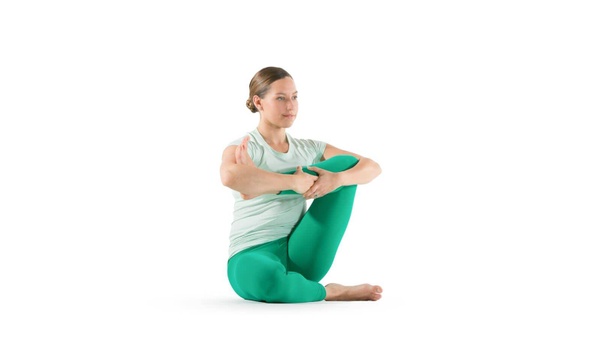
Make sure the rest of your body is firm and stable in the seated position. Perform this on each side for a couple of minutes, and soon your deep pelvic muscles will be activated.
Part 2: Step-by-Step Instructions to Perform Sukhasana
The following are steps to practice Sukhasana or Easy Pose:
Step 1- Start by sitting in Staff pose and firmly place your sitting bones on the yoga mat.
Step 2- Next, take a deep breath and start to bend your legs—cross the shins of your legs on top of one another.
Step 3- Sit with a straight spine, tighten your core, keep your knees close to the mat and close your eyes.
Step 4- Place both hands on your knees in Gayan Mudra and focus on your breath.
Step 5- Hold this position here for as long as you feel comfortable, and keep changing the placement of your legs.
Step 6- Finally, release and relax your legs by coming back into Staff pose.
Breath Awareness:
Inhale when you cross your legs and engage your upper body to sit straight.
Next, inhale and exhale while maintaining the Sukhasana position.
Finally, exhale when you release your cross-legged seated position.
Performance Duration for Beginners: Hold Sukhasana for a few deep breaths.
Performance Duration for Advanced: Hold Sukhasana for as long as you feel comfortable.
Part 3: Things to Keep in Mind
Sukhasana is usually maintained for a very long duration. So it’s important to make sure you follow all necessary posture tips. Here are some alignment and posture cues for Easy pose to get the most benefits and keep you safe from any injury:
Don't round your spine: Keep your neck, shoulders, tailbone, and glutes in one straight line. Also, make sure your chest is lifted and your core is engaged. This will help you avoid rounding your spine, which may lead to poor posture and unnecessarily strain on your neck.
Stay focused on your breath: Easy pose works wonders when building awareness and mindfulness in the body. To reap such benefits, close your eyes and focus on your breath. If you start having distracting thoughts, try to bring your mind back to your meditative state by chanting holy mantras.
Don’t cross the same leg for too long: Sukhasana is a prolonged hold position; so it’s important to keep changing your leg placement every 3-5 minutes. This will help you avoid nerve blockages and even out blood circulation in both your legs.
Part 4: Relaxing Poses After Sukhasana
Here are a few counter yoga poses to re-energize and relax your spine and pelvis after a long practice of Easy pose:
1. Adho Mukha Sukhasana (Easy Pose Forward Bend): Adho means "downward," Mukha means "face," and Adho Mukha Sukhasana is a basic seated forward bend that relaxes the spine and stretches the hips, hamstrings, and calves. Begin sitting with your legs in front of you and your spine tall.
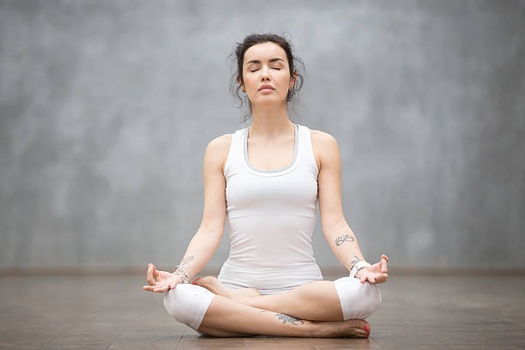
Next, bend your legs and sit in Easy pose. Inhale and lengthen your spine by extending both arms overhead. Exhale, fold forward from your hips, and bring your chest onto your crossed legs. Place your extended arms on the floor. Hold for 5-10 breaths. Finally, to release, slowly roll up to sitting.
2. Paschimottanasana (Seated Forward Bend Pose): For a deeper relaxation in your legs, sit on the ground with both your legs straight in front of you in Staff pose. Next, slowly begin to lean forward, and make sure your back is straight.
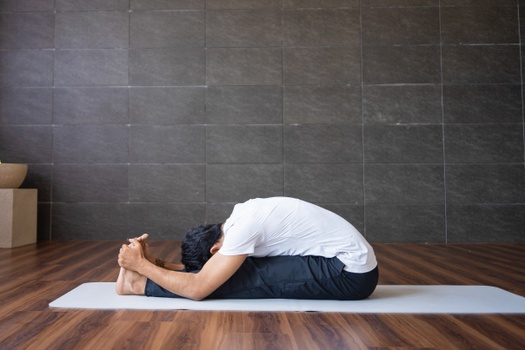
Then, reach forward and clasp your hands around your ankles or feet. You will feel a deep stretch in your back and hamstrings. Hold this pose for 30 seconds to 1 minute, then release and repeat until you feel your legs have re-energized with enhanced blood circulation.
3. Supta Baddha Konasana (Reclining Bound Angle Pose): This pose is perfect for relaxation of the spine and is a great Easy pose counter-posture.To get into Supta Baddha Konasana, start from Easy pose. From here, untangle your crossed legs and touch the soles of your feet together, forming a Namaste formation with your legs. Next, extend your arms overhead by slowly lengthening your spine upright.
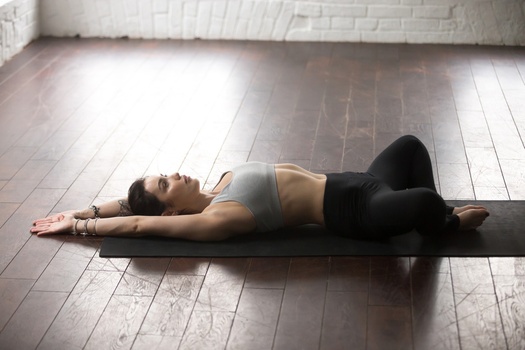
Finally, slowly lower your back and head to the ground, and lie down on your yoga mat with your arms overhead. Place a bolster or pillow under your lower back to remove any arching gaps. Relax here for 3-5 minutes until your spine feels comfortable and re-energized.
